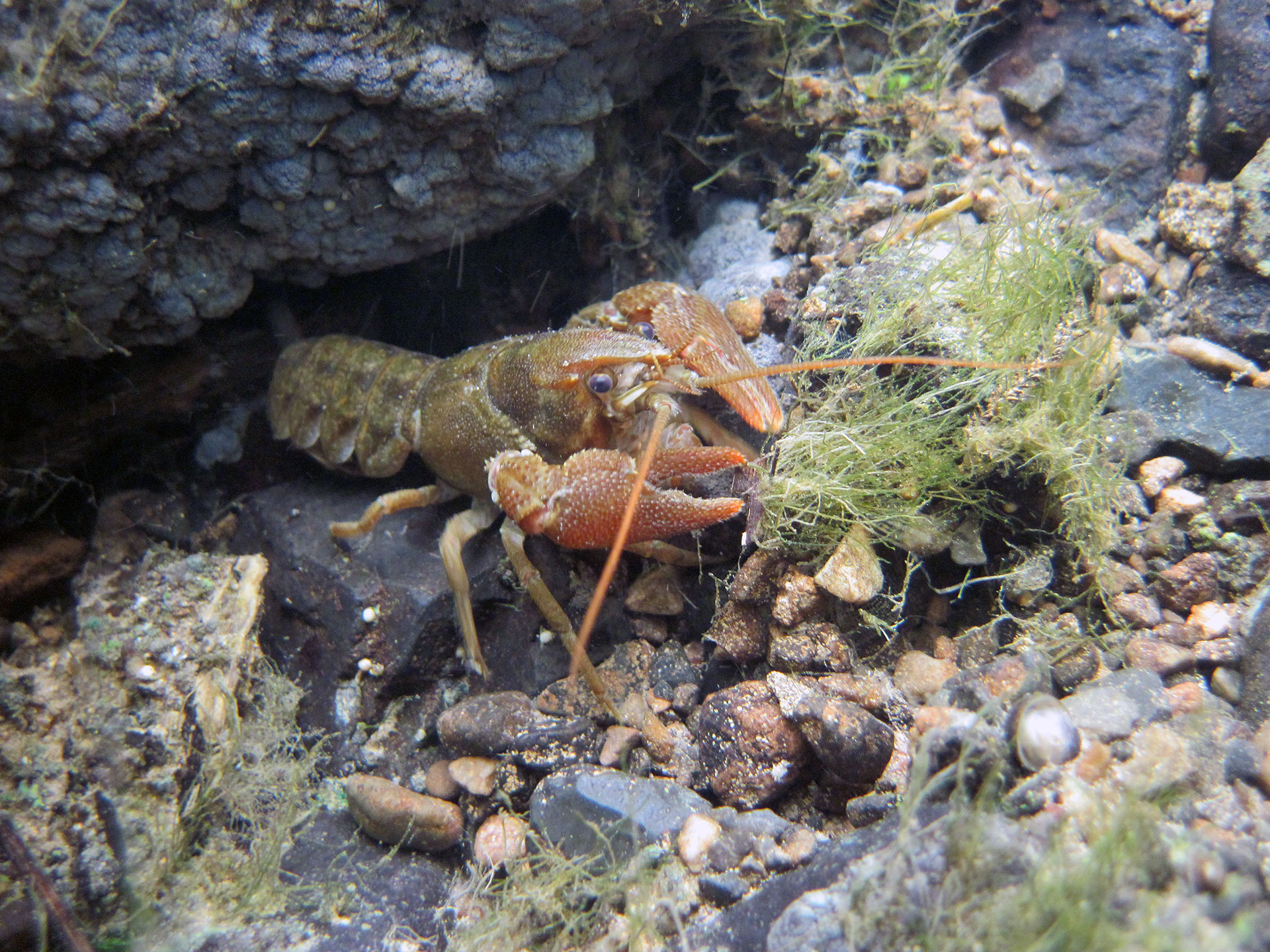The National Biodiversity Data Centre has updated the status of crayfish plague in Ireland following a recent outbreak in the River Nore, Kilkenny. The group recently issued a statement on emergency containment measures for ensuring water users “continue to exercise vigilance and adopt procedures to minimise the risk of further spread of the disease.”
Crayfish are a small, lobster-like creature that live in fresh waters all across Ireland. The white-clawed variety common to the island are a staple component of the freshwater ecosystem, eating snails and insect larvae while they are fed upon by otters and eels in turn.
They were thought to have been introduced to Ireland by French Cistercian Monks as a food source – though they are not eaten currently in Ireland, Sweden enjoy annual crayfish parties in August.
We are thought to have some of the most important stocks in Europe as they are under least threat from external factors such as overfishing, habitat destruction and pollution. The large population of crayfish on our island are believed to be of substantial conservation importance.
It was the import of crayfish (notably the red-clawed variety from America) into Sweden that triggered the first known instance of crayfish plague. The imported species carried the disease but were immune to it, while native species were all but wiped out. In Spain and Portugal, crayfish plague that spread from imported species has left native European crayfish at risk of extinction.
The plague comes in the form of an organism grouped with algae and diatoms; its swimming spores are chemically attracted to crayfish. On attachment to its shell they send out fungus-like filaments into the animal. Once a crayfish is infected it produces and releases more spores, resulting in the rapid death of its entire colony.
In its latest statement the National Biodiversity Data Centre reiterate procedures that can be followed to protect the plague from spreading following the latest reported outbreak on the River Nore. The steps include reporting sightings of non-native crayfish and ensuring equipment used on the water is properly cleaned and dried. Following these measures properly is essential as if the plague establishes itself, 100% mortality of the white-clawed crayfish is possible.
1 National Biodiversity Data Centre, Crayfish plague, http://www.biodiversityireland.ie/projects/invasive-species/crayfish-plague/, (accessed 5 September 2019).
2 Crayfish Surveys, The white-clawed crayfish, https://crayfishsurveys.com/the-white-clawed-crayfish/, (accessed 5 September 2019).
3 M. Viney, Crayfish plague: no wonder the Irish species is white-clawed, https://www.irishtimes.com/news/environment/crayfish-plague-no-wonder-the-irish-species-is-white-clawed-1.3642260, (accessed 6 September 2019).
Image Credit: Source 2 above.

